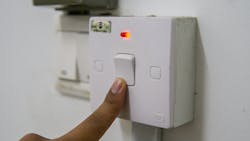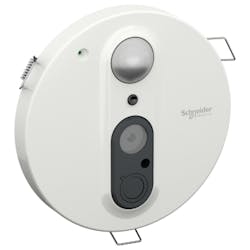Turn off the lights if nobody’s there: Smart buildings technology
You’ve either heard it from a parent or said it to a child: Turn off the lights when you leave a room. Some of us from certain generations heard companion phrases like, “Money doesn’t grow on trees,” or “I’m not going to air-condition the great outdoors!”
It’s a simple idea, but it gets fairly complicated when companies try to enforce simple lights-out-when-no-one’s-here policies in buildings. How do you really know if the room’s really empty or if people there are working so hard at their desks that they haven’t tripped motion detectors recently? Do you really want to shut off lights and heating ventilation and air conditioning (HVAC) systems to those hard-working people?
Smart Industry: How is the practice of people-counting changing in this digital era?
Brian Hanchey: Historically, energy has often been wasted on the heating, lighting and ventilation of unoccupied rooms. Now with digital transformation on the rise, digital solutions are available to help reduce emissions and empower mindful energy use in buildings. Facility managers can leverage smart building technologies, including room sensors and controllers, which provide the data and control needed to improve efficiency, health and comfort in a space, while simultaneously conserving energy.
SI: Why are the needs to accurately people count changing?
BH: During the pandemic, businesses relied on people-counting technologies to maintain safety in spaces and stay compliant with restrictions on the number of occupants in a room at once. Through occupancy monitoring, businesses could determine whether people were spaced out to maintain social distancing.
(Sensors) can pinpoint which areas of their offices are in use and leverage AI to adjust HVAC settings based on real-time data.
SI: What new capabilities are available?
BH: While traditional standard occupancy monitoring devices such as passive infrared sensors (PIR) can sense whether a room is occupied or not, they do not have the capability to measure the exact number of occupants. Smart room sensor technology has advanced in accuracy and can deliver real-time insights on headcount.
Furthermore, unlike traditional demand control ventilation sensors that rely on CO2 levels or programmed schedules, people-counting technology can now monitor a range of conditions and capture valuable data on anonymous people counting and occupancy. These sensors can help transform rooms into dynamic, healthy and productive spaces with optimal environments and ventilation.
What have the results been so far?
Early test cases are showing energy savings and we’re still collecting the data. In one case, the customer saw equipment runtime decrease 460 hours over a 3-week monitoring period.
About the Author
Robert Schoenberger
Editor-in-Chief
Editor-in-Chief
LinkedIn: linkedin.com/in/robert-schoenberger-4326b810
Twitter: @Rschoenb
Bio: Robert Schoenberger has been writing about manufacturing technology in one form or another since the late 1990s. He began his career in newspapers in South Texas and has worked for The Clarion-Ledger in Jackson, Mississippi; The Courier-Journal in Louisville, Kentucky; and The Plain Dealer in Cleveland where he spent more than six years as the automotive reporter. In 2013, he launched Today's Motor Vehicles, a magazine focusing on design and manufacturing topics within the automotive and commercial truck worlds. He joined IndustryWeek in late 2021 and took on responsibility for Smart Industry in 2023.



